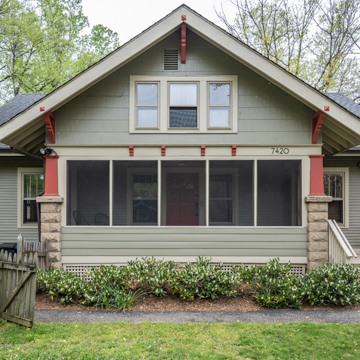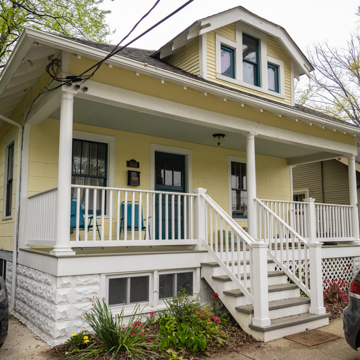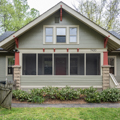Three Sears mail-order bungalows clustered together represent two of the most popular models offered, the Uriel/Conway and the Starlight. They were erected for Margaret Petty Hodge in the Petty Estate Subdivision of Takoma Park as an enticement to potential lot buyers. Takoma Park has among the highest number of Sears houses in the region, with the Uriel/Conway being the most popular model. The Uriel is identified by its cross-gable front that extends to provide cover for the inset front porch supported by battered columns set on stone piers. The slightly more diminutive Starlight features a hipped roof, inset porch, and clipped-gable dormer.
While pattern books were long popular, purchasing actual houses by mail was a phenomenon of the early twentieth century, with Sears being one of the largest suppliers, operating from 1908 to 1942. In total, the company offered 370 models. The house kits included everything from precut lumber and millwork to plumbing fixtures, lighting, and decorative features. They were made possible by the post-Civil War rise in such building technologies as balloon framing and wholesale dimensional lumber, increased railroad transport, and a growing middle class.




















